Religious practices have long shaped the culinary landscape of the Mediterranean region, with ancient religious prescripts deeply influencing what people ate and how they prepared their food. When examining the Mediterranean’s rich and diverse food traditions, it is essential to recognize the profound impact that ritualistic elements and spiritual customs have had. These practices dictated the use of specific ingredients, methods of preparation, and even the timing of meals.
The traditions tied to these religious roots have continued to evolve, affecting present-day gastronomy across the various cultures that encircle the Mediterranean Sea.
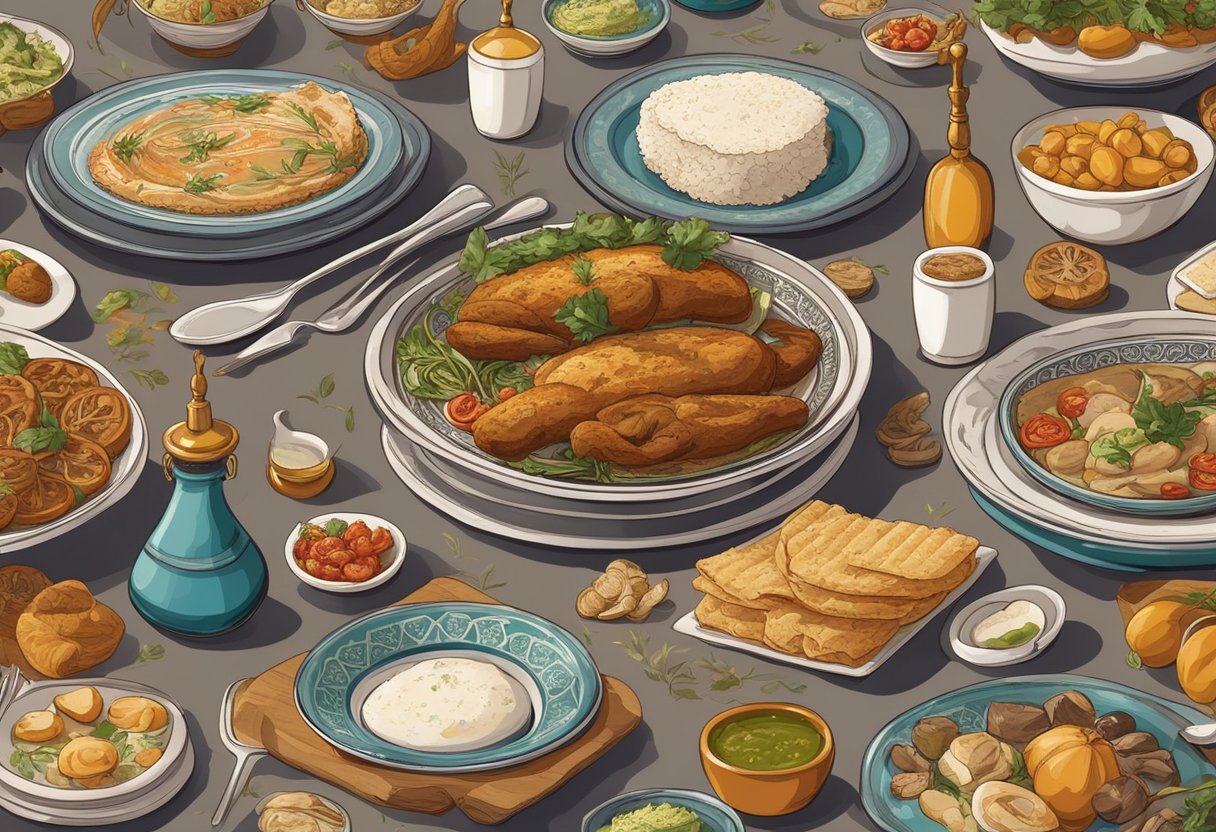
Particularly noteworthy are the dietary laws and restrictions that stem from the region’s dominant religions. These rules have shaped the diet, leading to the prominence of certain foodstuffs and the exclusion of others. The intrinsic link between food and faith is evident in the widespread use of key ingredients like olive oil, which holds both culinary and sacred significance. Furthermore, the intersection of religious festivals and fasting periods has given rise to an array of dishes uniquely associated with spiritual observance and celebration – each reflective of the subtle nuances of the diverse communities practicing within the Mediterranean basin.
Even as modern society shifts towards health-conscious eating, the gluten-free adaptation of Mediterranean cuisine continues to be influenced by religious dietary laws, whilst remaining true to its cultural heritage. A gluten-free Mediterranean diet emphasizes naturally gluten-free staples such as fruits, vegetables, legumes, nuts, and seeds, along with the prominent use of olive oil, offering a confluence of tradition, health, and religious adherence.
Key Takeaways
- Religious customs have historically dictated the culinary traditions and ingredients of Mediterranean cultures.
- Dietary laws of the region’s religions have led to specific food practices, including gluten-free options.
- Contemporary Mediterranean cuisine retains its religious influences while adapting to modern dietary trends and health considerations.
Table of Contents
Historical Overview of Religious Practices
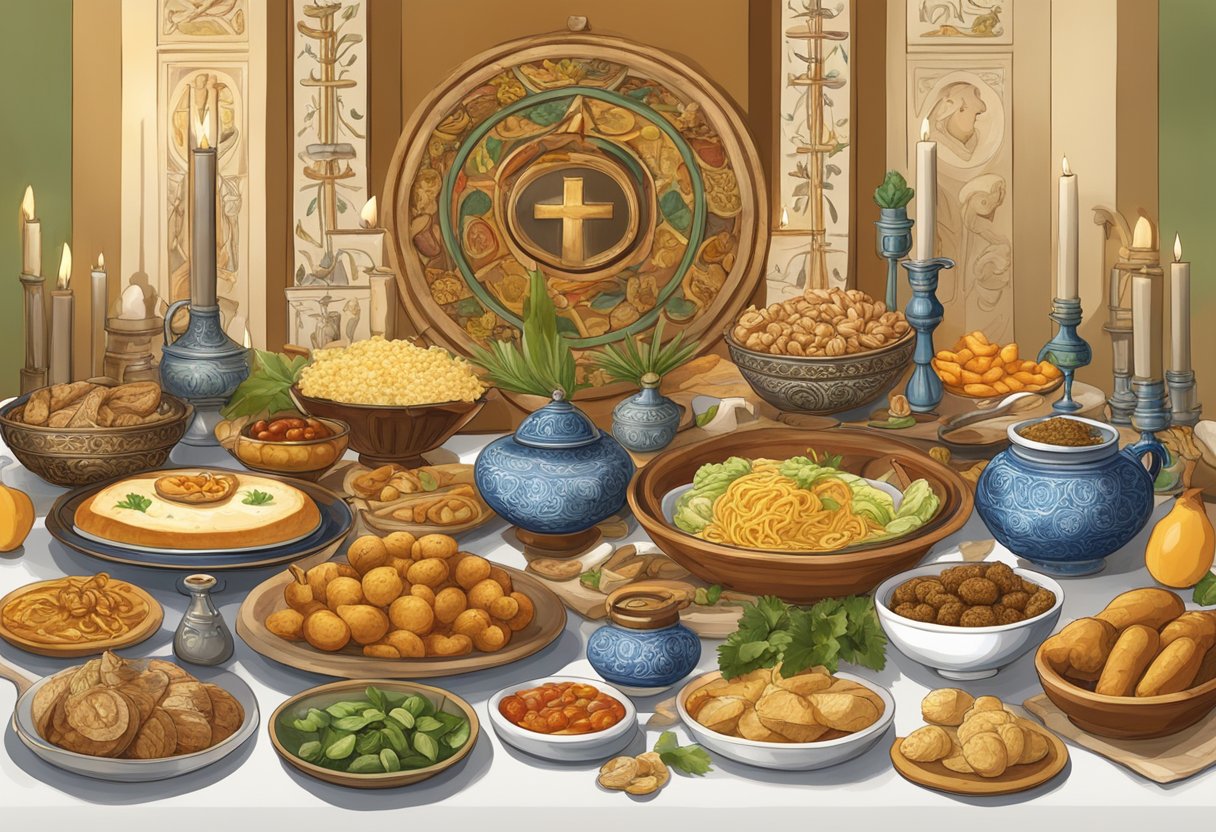
Religious practices have been pivotal in shaping the dietary customs of regions around the Mediterranean, including the Middle East, Southern Europe, and North Africa. Broadly, these areas shared a reverence for cereals and grains. Yet, a significant influence of religion on Mediterranean food can be seen through dietary restrictions and fasting periods that encouraged consumption of plant-based foods, also aligning with a gluten-free diet.
In the Middle East, the Islamic faith prescribed specific dietary laws, known as Halal, which influenced the type of food consumed but also the manners of its preparation. Similarly, Christianity in Southern Europe imposed fasting periods such as Lent, where meat was restricted, subtly encouraging a pivot towards grains, legumes, and vegetables. This inadvertently supported a more gluten-free approach to eating, relying less on wheat and more on grains like millet or rice.
North Africa was impacted by both its own indigenous beliefs and the spread of Islam, with a strong presence of dishes that are naturally gluten-free, such as those based on corn, rice, and various legumes.
Religion was closely tied with culture, and it extended to trade practices, as religious norms affected the commodities that were traded. Items that were permissible in religious contexts were more commonly exchanged. This had an indirect effect on the gluten-free diet, as regions that emphasized gluten-free grains like rice and millet due to their religious beliefs, found these items to be more commonplace in their diets.
Across these regions, identity, culture, and religion intertwined to forge unique dietary practices, anchoring them in what has become known today as the Mediterranean diet. The influence of religious practice is clear, delineating not just what was eaten, but how it was integrated into the regional cultures through both tradition and necessity.
Dietary Laws and Restrictions

In the context of the Mediterranean diet, religious practices significantly influence food choices, particularly concerning fasting periods and the consumption of meat, fish, and olive oil. These practices, deeply rooted in Christianity, Islam, and Judaism, impact dietary habits and food preparation in the region.
Christianity and Mediterranean Cuisine
Christian dietary customs in the Mediterranean are often linked to the liturgical calendar, with Lent being a notable period where individuals may abstain from meat and fast. The emphasis is on foods like grains, vegetables, and olive oil, which align with a gluten-free Mediterranean diet. Fish is also a typical alternative to meat during these fasting periods.
Islam and Halal Foods
The Islamic faith introduces halal dietary laws that determine permissible foods. Meat must be processed according to specific guidelines, excluding pork due to religious teachings. Fasting during Ramadan is a significant aspect of dietary practice, where no food or drink is consumed from dawn to dusk. Outside of fasting, grains and olive oil remain staples in the diet and can be consumed following a gluten-free regime.
Judaism and Kosher Guidelines
Judaism prescribes kosher laws where dietary restrictions play a crucial role. Meat and fish must be slaughtered and prepared to meet kosher standards, and the consumption of certain grains is restricted during Passover. However, grains that adhere to a gluten-free Mediterranean diet are still permissible. Olive oil is commonly used in Jewish Mediterranean cuisine, fitting both kosher and gluten-free guidelines.
Key Ingredients in Mediterranean Religious Practices
Mediterranean religious practices are deeply intertwined with the region’s cuisine, utilizing key ingredients that carry symbolic meaning and are integral to ritual observances.
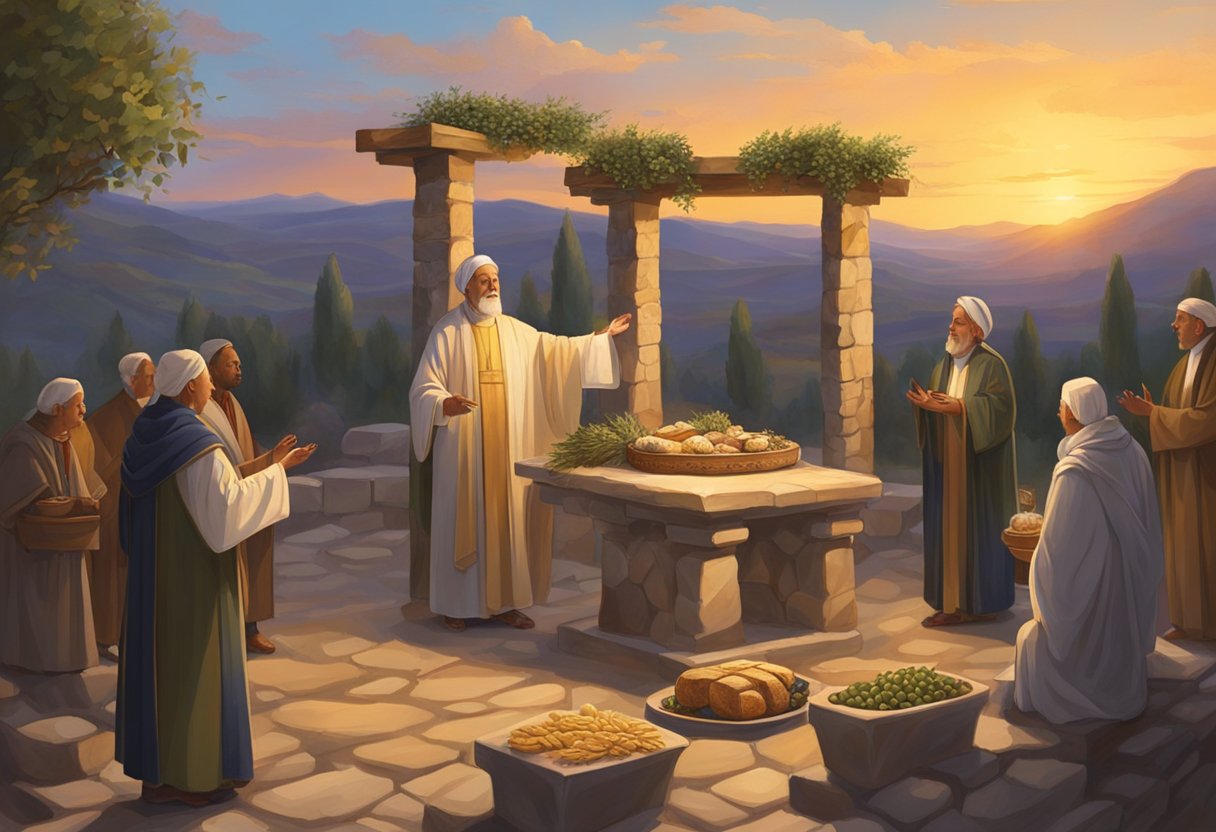
Grains and Breads as Staples
Grains like wheat are central to the Mediterranean diet and hold significant religious symbolism, often representing life and fertility. Bread, a fundamental outcome of grain harvests, is revered in many rites as a gift from the divine, signifying sustenance and community.
Olive Oil: Symbolism and Usage
Olive oil, revered for its purity and longevity, plays a critical role in Mediterranean traditions. This sacred oil is used to anoint the faithful during sacramental ceremonies and to light lamps in places of worship, serving as a symbol of enlightenment and divine benevolence.
Wine in Rituals and Celebrations
Wine, derived from grapes, is a celebratory beverage ritualistically consumed during many Mediterranean feasts and religious celebrations. It represents joy and the human connection with the divine, often being a symbol of sacred blood in religious narratives.
Herbs and Spices: Ritualistic and Culinary Uses
Herbs such as rosemary and thyme, along with spices like saffron, cumin, and garlic, are not only culinary staples but also possess strong ritualistic connotations. They are used to purify, heal, and convey prayers, their fragrances rising with the smoke of sacred fires.
Festivals and Fasting Periods
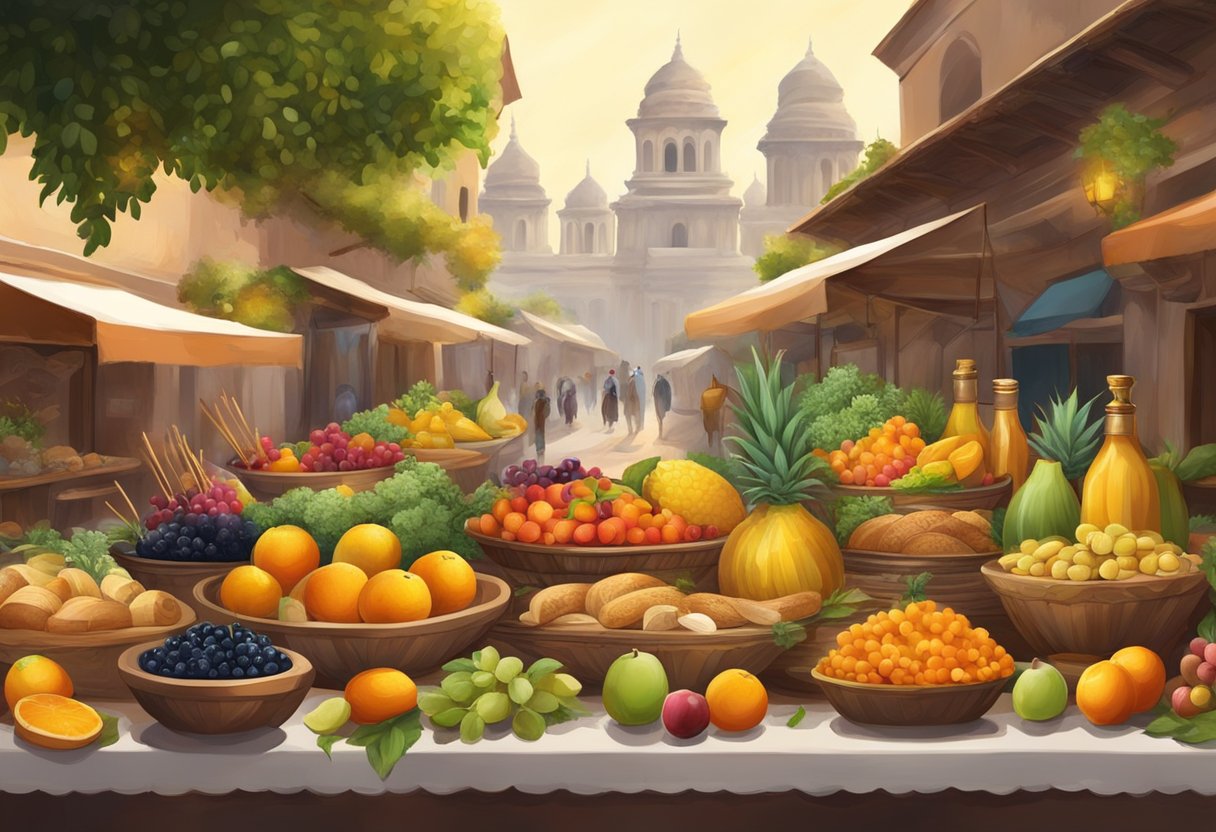
Mediterranean cuisine is deeply intertwined with the region’s rich tapestry of religious celebrations. Each culture has its own distinctive periods of feasting and fasting that influence the food practices, ingredients, and dishes.
Christian Celebrations and Feasts
In Christianity, particularly among Greek Orthodox Christians, periods of fasting such as Lent and the Assumption significantly impact dietary habits. During these times, many adherents abstain from foods like meat and dairy products, turning instead to a variety of vegetables, legumes, nuts, and fruits that fit a gluten-free diet. Rich dishes that feature lamb or cheese are reserved for celebratory feasts, like Easter. The introduction of rice paves the way for creative, filling, and gluten-free meals that reflect the respect for fasting traditions. Orthodox religious fasting plays a vital role in shaping the food culture of the region.
Muslim Festivities and Ramadan
During Ramadan, Muslims engage in fasting from dawn to sunset, refraining from consuming any food or drink. The fast is traditionally broken with dates and water, followed by a sunset meal called iftar which often includes a lavish spread of fruits, nuts, rice, and honey-based dishes—all naturally gluten-free. The conclusion of Ramadan brings the celebration of Eid al-Fitr, where special foods, such as ma’amoul—a type of sweet cookie often filled with dates and nuts—are enjoyed.
Jewish Observances and Dietary Customs
Jewish dietary laws, or kashrut, influence the food consumed during religious observances. For example, Passover prohibits the consumption of leavened bread and related products, which encourages the consumption of naturally gluten-free foods such as fruits, vegetables, and matzah made from rice flour. Celebrations like Hanukkah feature foods like latkes—traditionally made with potatoes—which can be adapted to a gluten-free diet by ensuring no cross-contamination with gluten-containing ingredients. Lamb is often served during Passover, and honey and fruits are common during Rosh Hashanah, symbolizing the wish for a sweet new year.
Regional Variations and Influences
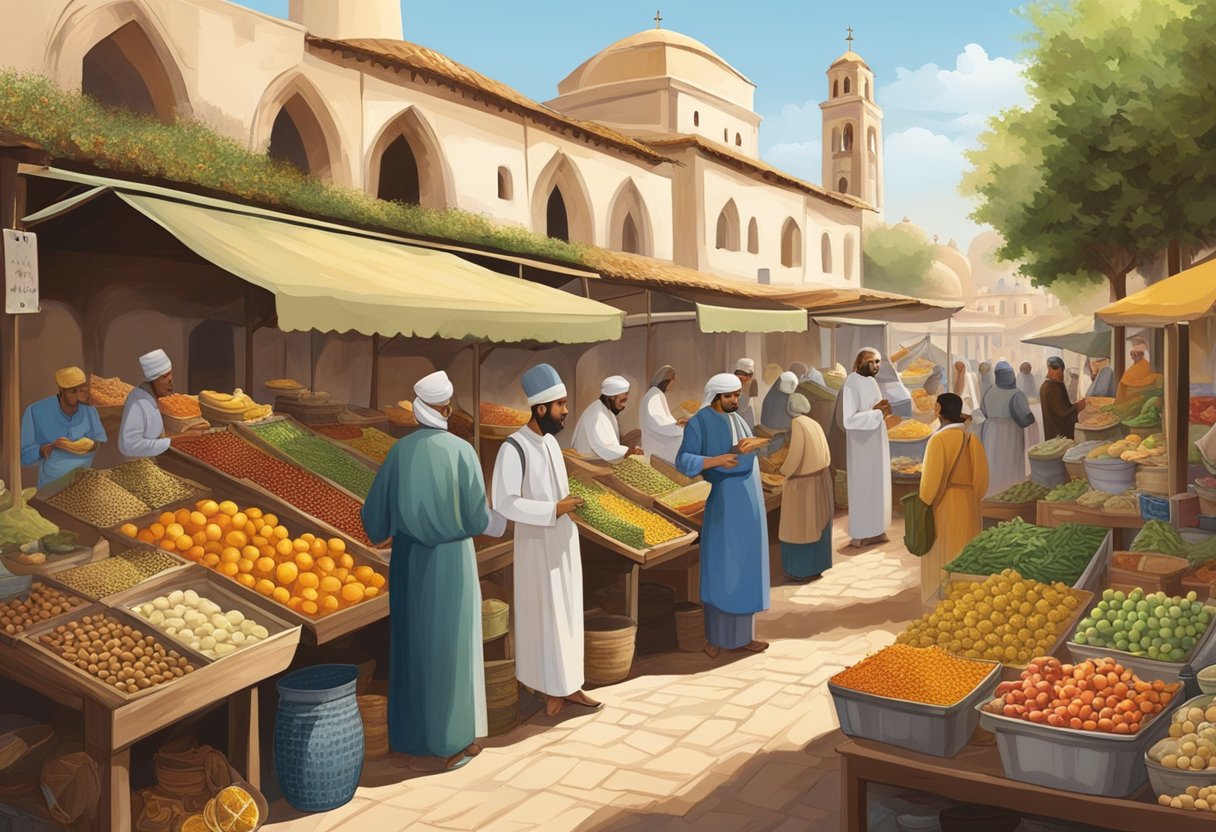
The Mediterranean’s rich tapestry of religious diversity has greatly influenced the region’s cuisine, introducing distinctive ingredients and cooking styles, particularly within gluten-free practices.
North African Influence
In North Africa, countries like Egypt, Morocco, and Tunisia demonstrate a deep connection between their Islamic faith and the culinary sphere. Their use of gluten-free grains like millet, sorghum, and corn has fostered the creation of inherently gluten-free dishes. Morocco is renowned for its tagines, often accompanied by millet couscous, while Tunisia offers harissa-spiced dishes, and Egypt‘s use of corn in bases like ta’amia (falafel) reflects the region’s innovative adaptations.
Eastern Mediterranean Adaptations
Lebanon and Turkey are paramount in showcasing how the Eastern Mediterranean has embraced religious influences in their gluten-free cuisine. Lebanese tabbouleh, traditionally made with bulgur, has seen adaptations using quinoa, providing a gluten-free alternative without compromising on flavor. Similarly, Turkish cuisine employs a plethora of spices and meats in dishes like koftes while leveraging staples like rice and chickpea flour to maintain a diverse gluten-free menu.
Southern European Contributions
The Southern European nations, particularly Italy, Greece, and Spain, have incorporated their Catholic and Orthodox faiths into a celebration of gluten-free options. Italian cuisine’s rich array of polenta-based dishes and risottos made with Arborio rice caters wonderfully to those avoiding gluten. Greek cuisine, often utilizing olive oil, fresh vegetables, and herbs, offers dishes like dolmades made with grape leaves and rice. Finally, Spain’s varied palette includes the famous paella, which is traditionally gluten-free, made with short-grain rice and a vibrant array of proteins and vegetables.
Influence of Trade and Colonialism
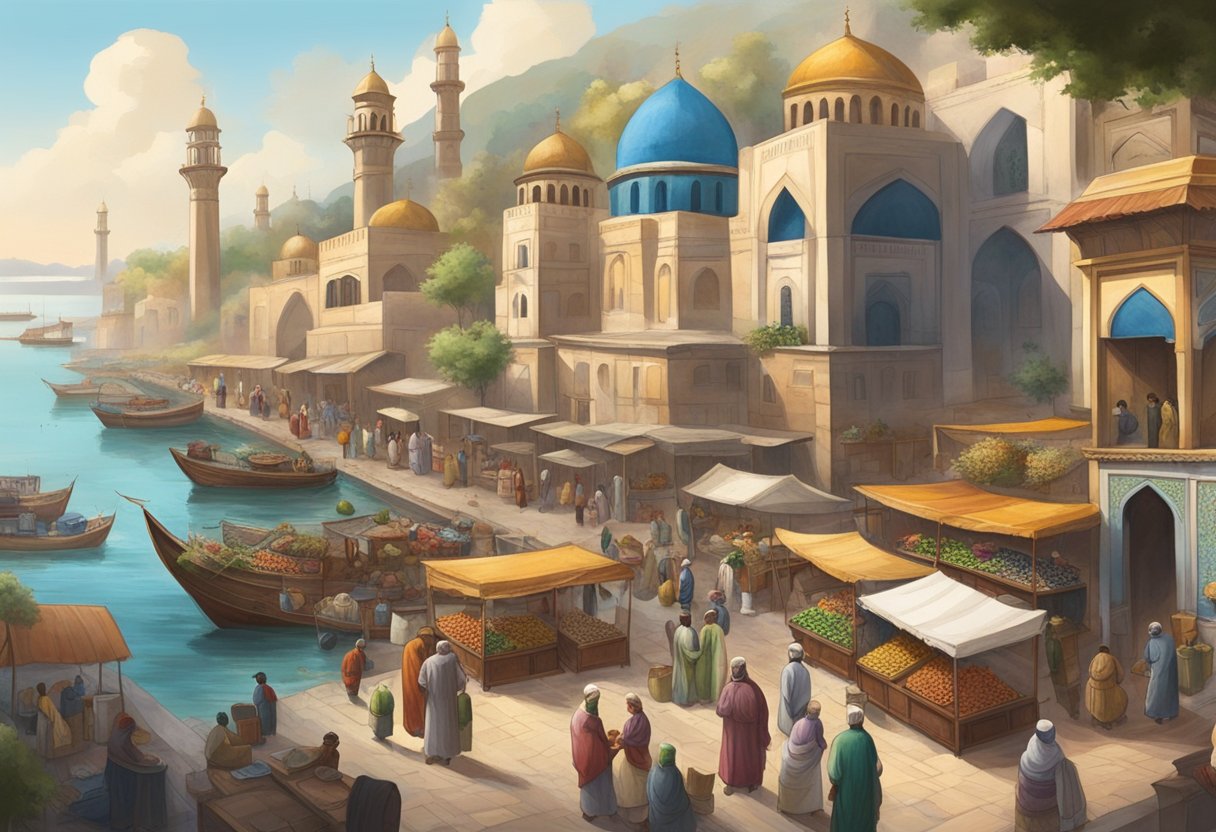
Mediterranean cuisine is a tapestry woven with the threads of trade and colonialism, each bringing distinct flavors and ingredients to the region.
Introducing New Foods and Spices
Trade routes opened the Mediterranean to a variety of new foods and spices, reshaping the culinary landscape. For instance, tomatoes and chickpeas became staples in regional dishes. Essential ingredients like coriander and parsley were introduced by traders from places such as Persia and the Arab world. The introduction of these foods coincides with the principles of a gluten-free Mediterranean diet by emphasizing fresh, non-grain-based ingredients.
The Impact of the Byzantine Empire
The Byzantine Empire played a key role in Mediterranean cuisine’s development by incorporating olive oil and seafood into the diet—a natural fit for gluten-free eating. Olive oil became the cornerstone of cooking and food preservation methods, and seafood provided a source of protein that was both bountiful and varied, reflecting the empire’s vast reach and wealth.
Ottoman Empire’s Cross-Cultural Exchanges
Under the Ottoman Empire, cross-cultural exchanges were prevalent. This period saw the blending of Mediterranean flavors with exotic spices and the introduction of fruit and vegetables from new territories. Ottomans incorporated rich diversity in dishes, harmonious with a gluten-free Mediterranean diet that celebrates the use of diverse, naturally gluten-free food groups.
Contemporary Religious Influences
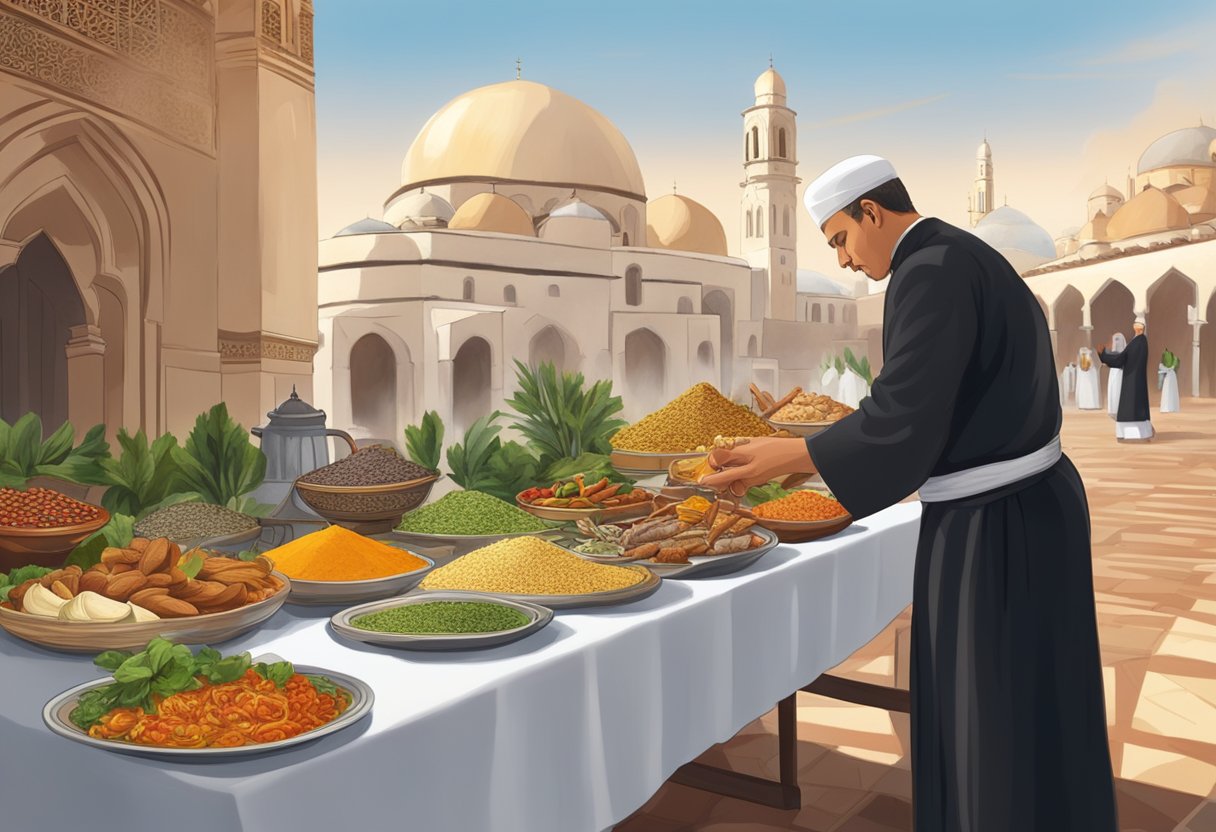
In the Eastern Mediterranean, religious beliefs continue to have a significant impact on the culinary culture. Societies here often intertwine their religious practices with dietary choices, notably influencing the Mediterranean cuisine. Islamic dietary laws, for instance, dictate the consumption of halal food, which has led to the evolution of region-specific dishes that align with these principles.
Jewish dietary laws, or kashrut, also shape local food practices, with a clear emphasis on kosher foods. This has given rise to a unique subset of Mediterranean cuisine that adheres to these restrictions while maintaining the diet’s core components of plant foods, olive oil, and fish.
Religion influences not just what is consumed, but also when and how. For example, Christian fasting periods, such as Lent in the Mediterranean society, often result in a temporary shift towards vegetarian and vegan dishes. This aspect of culture infiltrates everyday food choices, maintaining a connection between contemporary religious practices and daily eating habits.
Gluten-free adaptations of the traditional Mediterranean diet cater to those with dietary restrictions, such as celiac disease, and respect religious dietary rules. Such adaptations might include:
- Substitutions: replacing traditional wheat-based products with gluten-free alternatives like quinoa or gluten-free pasta.
- Emphasis on inherently gluten-free components: such as fruits, vegetables, legumes, nuts, seeds, and most dairy.
These adaptations illustrate how religious beliefs and dietary laws continue to mold Mediterranean dietary patterns, ensuring inclusivity while upholding a commitment to health and tradition.
Frequently Asked Questions
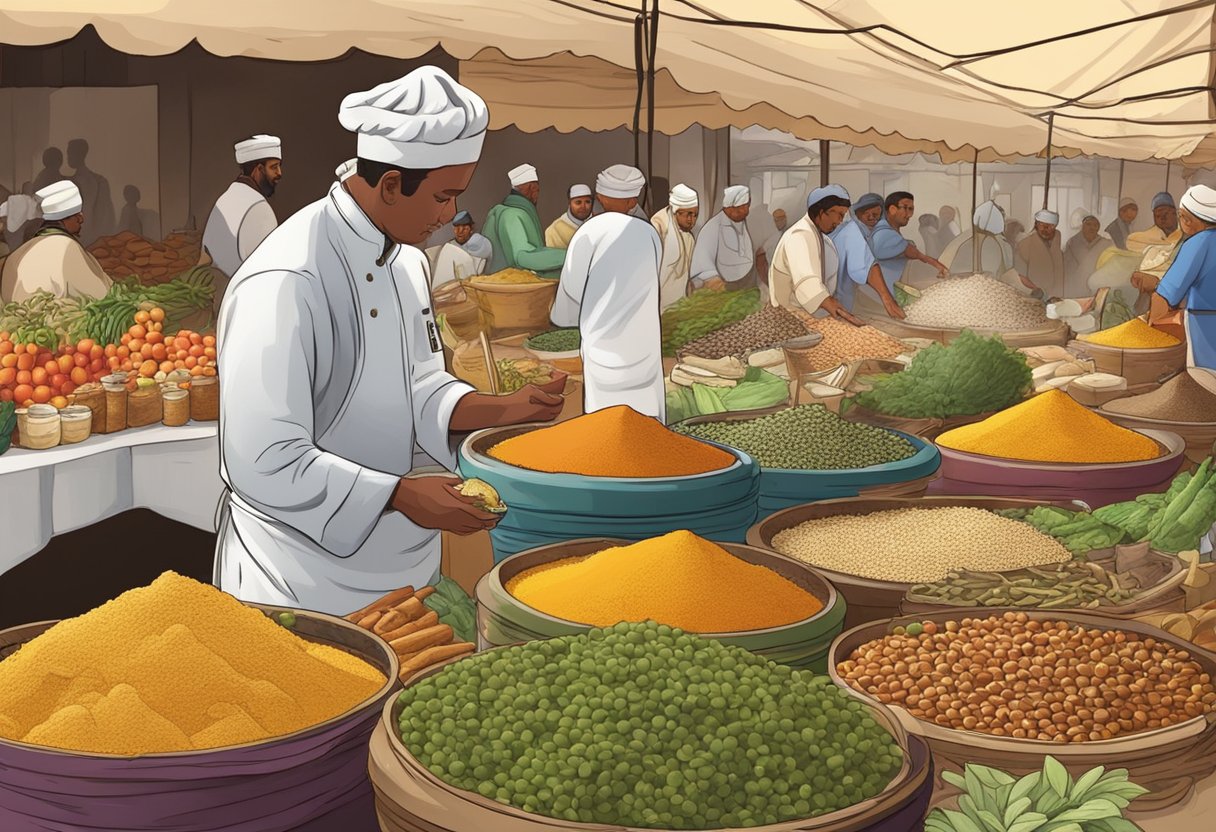
The intersection of religion and Mediterranean cuisine is profound, influencing everything from everyday meals to seasonal feasts. The following frequently asked questions explore how religious traditions shape Mediterranean dietary practices and culinary diversity.
How have religious practices shaped the dietary habits in Mediterranean countries?
Religious practices have historically dictated certain dietary restrictions and preferences like the use of specific ingredients and abstaining from others. For example, many Italian dishes reflect Catholic influence, particularly in the avoidance of meat on Fridays and during Lent, with fish and vegetable dishes being more prominent.
What impact does the range of religions in the Mediterranean region have on its cuisine?
The Mediterranean region hosts a mosaic of religions, each contributing to the diversity of the cuisine. In places where Islam is practiced, halal food laws preside, emphasizing the use of meats like lamb and chicken prepared according to Islamic standards, which also align with gluten-free requirements as they do not involve grains.
How do religious fasting periods affect food consumption in Mediterranean cultures?
Fasting periods, such as Ramadan for Muslims and Lent for Christians, significantly influence food consumption. Meals are often lighter and based on simple, plant-based, gluten-free foods like legumes, vegetables, and fruits, with a focus on dishes that can sustain individuals throughout fasting hours.
In what ways have religious food laws influenced traditional Mediterranean recipes?
Religious food laws have been instrumental in shaping Mediterranean recipes. Jewish kosher laws, for instance, have led to distinct culinary techniques and combinations that avoid mixing meat and dairy, while also promoting the use of gluten-free grains like quinoa and rice in traditional dishes.
Can religious cross-cultural exchanges be traced in the development of Mediterranean cuisine?
Religious cross-cultural exchanges are evident in Mediterranean cuisine’s evolution. The sharing of spices and cooking methods between Christians, Jews, and Muslims, for example, has enriched the region’s food palette, including the integration of naturally gluten-free ingredients such as olives, herbs, and fruits.
How does the religious diversity of the Mediterranean area reflect in the variety of its food dishes?
Religious diversity is mirrored in the Mediterranean’s culinary variations, where one can enjoy a multitude of meat, seafood, and vegetable dishes, each respecting religious dietary laws. For those following a gluten-free diet, options abound in the wide use of corn, potatoes, and rice as staple ingredients in diverse religious communities.



